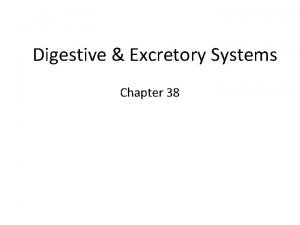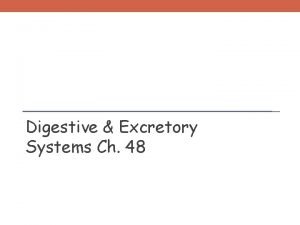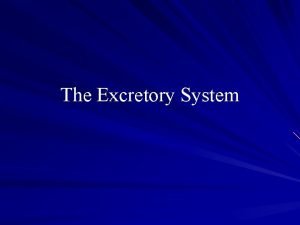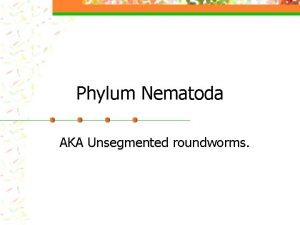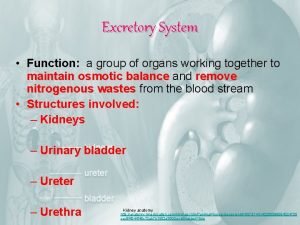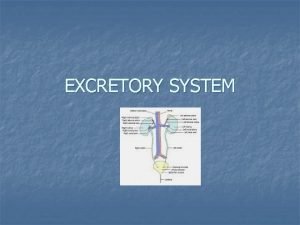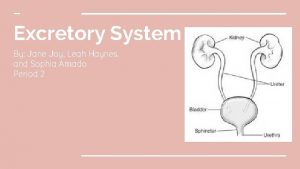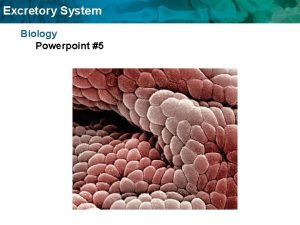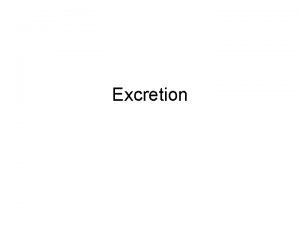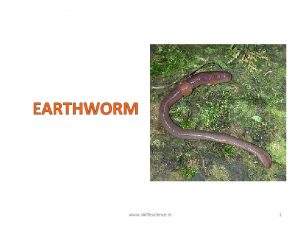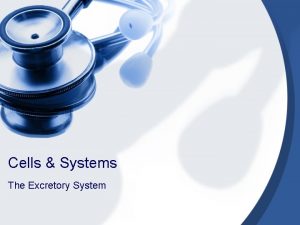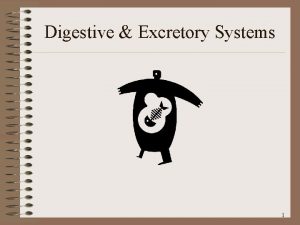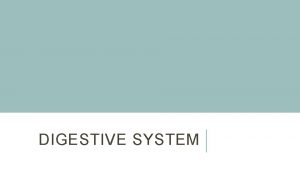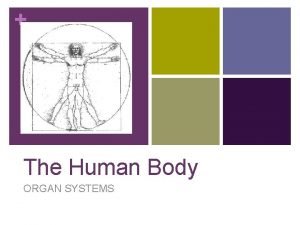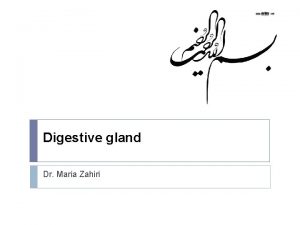Digestive Excretory Systems Ch 48 Ch 48 1














- Slides: 14

Digestive & Excretory Systems Ch. 48

Ch. 48. 1 Nutrients 1. Carbohydrates- organic compound used for energy. 2. Proteins- organic compounds used for the structural and functional material of our cells. 3. Lipids- organic compounds used for cell membranes, steroid hormones, and energy storage. 4. Vitamins- organic compounds that act as coenzymes. 5. Minerals- inorganic substances used for certain body structures, carry out nerve and muscle function, and maintain osmotic balance. 6. Water- molecule that makes up over half our body weight; most of the chemical reactions necessary for life occur in water; regulates body temperature.

Ch. 48. 2 Digestive System Gastrointestinal Tract- tract that begins with the mouth and winds its way to the anus. Functions: -Breaks food down into molecules the body can use. -Molecules are absorbed into the circulatory system & carried throughout the body.

Mouth Mechanical Digestion: chewing using the teeth and tongue. Chemical Digestion: use of the Salivary Glands to secrete saliva containing salivary amylase for digestion of polysaccharides into diasaccharides & lingual lipase for the beginning digestion of lipids.

Esophagus- muscular tube that connects your mouth to your stomach. -peristalsis

Stomach: digestion of proteins into dipeptides using mechanical & chemical digestion. Specialized stomach cells: 1. mucous cells: secretes mucous to protect the stomach. 2. parietal cells: secrete HCl. 3. chief cells: secrete pepsinogen which is converted to pepsin.

Cardiac sphincter muscle: prevents food from passing back up into the esophagus. Pyloric sphincter muscle: regulates the flow of chyme into the small instestine.

Small Intestine: -completes the chemical digestion of all food. -absorbs a majority of nutrients into the blood stream. Three parts: duodenum, jejunum, ileum -villi: increase surface area

Large Intestine (colon): -various vitamins including K & a type of B are produced by bacteria and absorbed. -remaining water is absorbed. -solid waste is prepared for removal out the rectum. 1. Cecum 2. Appendix 3. Ascending colon 4. Transverse colon 5. Descending colon 6. Sigmoid colon 7. Rectum 8. Anal Canal

Pancreas: Secretes various digestive enzymes to the small intestines. -Examples: sodium bicarbonate, trypsin, pancreatic amylase, nucleases, lipase. Liver: filters toxic substances out of the blood, stores glucose, produces bile. Gall Bladder: stores bile for future use in the small intestine for digesting lipids.


Enzyme Origin Function Salivary Amalyse Salivary glands in mouth Digest polysaccharides in disaccharides. Pancreatin Amalyse Pancreas Sent to small intestines for digesting carbohydrates. Pepsin Chief cells in the stomach Digest proteins into individual amino acids. Trypsin Pancreas Sent to small intestines for digesting proteins into amino acids. Bile* Liver Stored in gall bladder sent to small intestines for digesting large fat molecules into smaller fat molecules. Lipase Mouth & Pancreas Secreted by glands in the mouth. Also secreted by the pancreas and sent to small intestines for digesting lipids into individual parts of a fat molecules. Nucleases Pancreas Sent to small intestines for digesting nucleic acids.

Excretory System Organs: 1. Lungs 2. Skin 3. Kidneys 4. Ureter- passageway from kidneys to bladder. 5. Bladder- stores urine for removal. 6. Urethra- passageway leading out of the body for urine.

Kidneys Function: 1. Homeostasis 2. Removal of urea (from the liver) & other wastes. 3. Reabsorbs water back into the blood stream. 4. Regulates p. H level within the blood. Nephrons (kidney ‘cells’)- act as numerous filters of the blood. Make urine!
 Section 38-2 the process of digestion answer key
Section 38-2 the process of digestion answer key Digestive and excretory system
Digestive and excretory system Ekskresi
Ekskresi Main excretory organs
Main excretory organs Unsegmented roundworms
Unsegmented roundworms What does the excretory system do
What does the excretory system do What are the functions of excretory system
What are the functions of excretory system Excretory organ?
Excretory organ? Jessy gonzalez
Jessy gonzalez What are the main functions of excretory system
What are the main functions of excretory system Lungs excretory function
Lungs excretory function Section 38-3 the excretory system
Section 38-3 the excretory system Special breathing devices in pheretima
Special breathing devices in pheretima Allantoic stalk fetal pig
Allantoic stalk fetal pig 5 facts about the excretory system
5 facts about the excretory system
